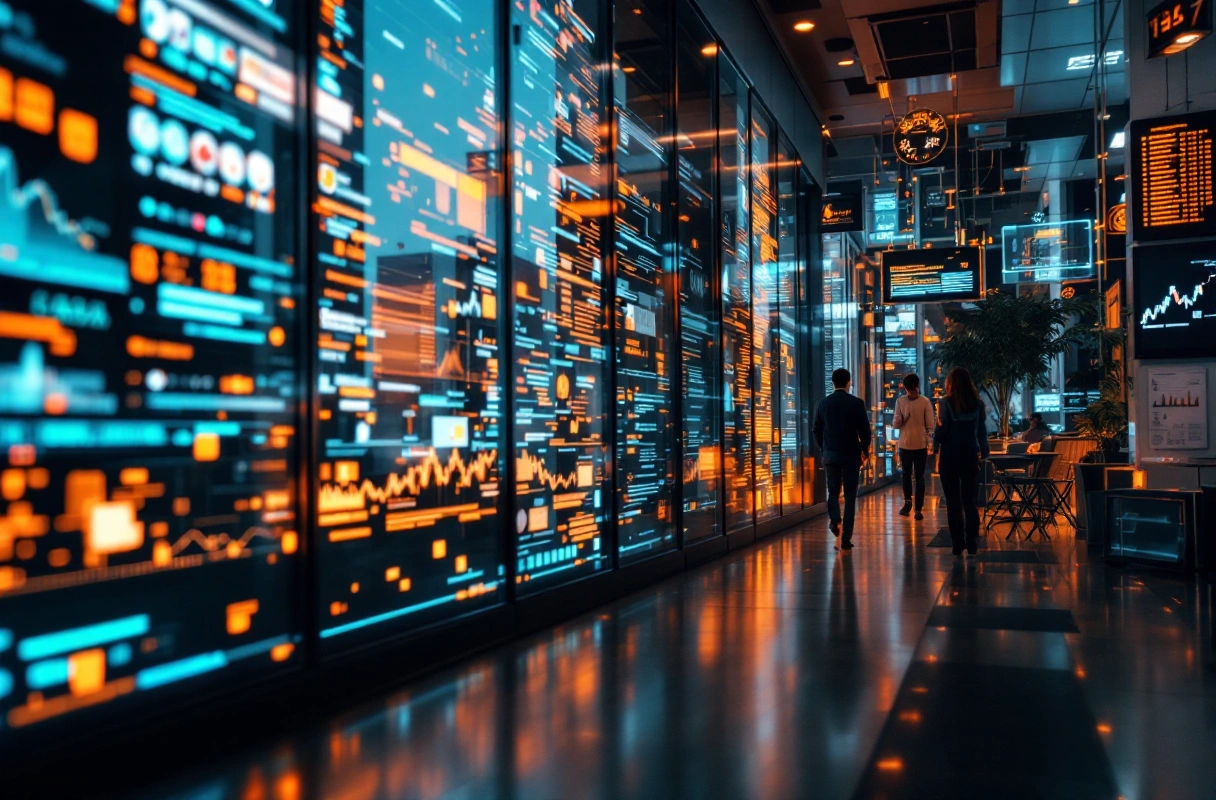The integration of technology into finance has given rise to a multitude of innovations. Among these, tokenized real-world assets are emerging as a significant trend within the fintech landscape. By leveraging blockchain technology, tokenization transforms tangible assets into digital tokens, allowing for fractional ownership, increased liquidity, and broader accessibility. As we delve into the mechanics and implications of this innovation, it becomes clear that the future of investment is being reshaped.
This article will explore the nuances of tokenized real-world assets, their impact on the financial industry, and the implications for investors and entrepreneurs alike. We will examine how these innovations are influencing the broader context of decentralization and the role of digital assets in today’s economy.
Understanding Tokenization and Its Benefits

Tokenization involves converting ownership rights of a real-world asset into a digital token on a blockchain. This process has several benefits that can greatly enhance investment opportunities.
The Mechanics of Tokenization
Tokenization works by creating a digital representation of an asset, which can include anything from real estate to commodities or even art. The key steps involved in tokenization include:
- Asset Identification: The first step is identifying the asset to be tokenized, ensuring it has a clear legal framework.
- Legal Structuring: This involves creating a legal structure that defines ownership rights and obligations associated with the token.
- Creating the Token: Once the asset is legally structured, a smart contract is developed to issue tokens on a blockchain.
- Distribution: The tokens can then be distributed to investors, allowing them to buy, sell, or trade them in secondary markets.
Advantages of Tokenized Real-World Assets
Tokenization provides a range of advantages:
- Fractional Ownership: Investors can purchase a fraction of an asset, making high-value investments more accessible.
- Increased Liquidity: Tokenized assets can be traded on various platforms, enhancing liquidity compared to traditional asset markets.
- Global Reach: Investors from anywhere in the world can participate in asset ownership, breaking down geographical barriers.
- Transparency and Security: Blockchain technology ensures that all transactions are recorded transparently and securely, reducing fraud risks.
These benefits are crucial in a world where traditional investment avenues are often limited by high entry costs and regulatory constraints.
The Role of Fintech in Tokenization

The fintech industry plays a pivotal role in advancing the tokenization of real-world assets. With the rise of decentralized finance (DeFi) and Web3 trends, financial services are undergoing rapid transformation.
Decentralization and Its Impact
Decentralization shifts control from centralized institutions to individuals, allowing for more democratic access to financial services. This has significant implications for tokenized assets:
- Reduced Costs: Eliminating intermediaries can lower transaction fees and make investing more affordable.
- Empowerment of Investors: Individuals can manage their investments directly, fostering a sense of ownership and control over their financial future.
Innovations in Fintech
The fintech sector continues to innovate, with several key trends shaping the future of tokenized assets:
- Integration of AI in Finance: Artificial intelligence is being used to analyze market trends, optimize trading strategies, and assess the value of tokenized assets.
- Smart Contracts: These self-executing contracts automate transactions, ensuring that terms are met without the need for intermediaries.
- NFTs and Digital Collectibles: Non-fungible tokens have opened new avenues for tokenizing unique assets, such as art and collectibles, enhancing their marketability.
These innovations reflect the evolving nature of finance and the increasing importance of technology in investment strategies.
Navigating Regulatory Challenges

As with any emerging technology, the tokenization of real-world assets faces regulatory hurdles. Understanding these challenges is vital for investors and entrepreneurs in the fintech space.
Current Regulatory Landscape
Regulations governing tokenized assets vary widely across jurisdictions. Key considerations include:
- Securities Laws: In many regions, tokenized assets may be classified as securities, requiring compliance with specific regulations.
- Tax Implications: The treatment of tokenized assets for tax purposes can be complex, necessitating careful planning and consultation with legal experts.
- Consumer Protection: Ensuring that investors are adequately protected is a priority for regulators, leading to the implementation of stringent rules.
Strategies for Compliance
To navigate these challenges successfully, consider the following strategies:
- Stay Informed: Regularly update your knowledge of regulatory changes in your jurisdiction and globally.
- Consult Legal Experts: Engage with legal professionals specializing in fintech and blockchain to ensure compliance with all relevant laws.
- Implement Best Practices: Establish transparent processes and safeguards to protect investors and build trust in your tokenized offerings.
Addressing regulatory challenges proactively can help businesses leverage the benefits of tokenization while minimizing risks.
The Future of Tokenized Real-World Assets
As we look to the future, the potential for tokenized real-world assets in the fintech landscape is substantial. Several trends are likely to shape this evolution.
Increased Adoption Across Industries
Tokenization is not limited to finance; it is poised to impact various sectors, including:
- Real Estate: Fractional ownership models are transforming how individuals invest in property.
- Art and Collectibles: Tokenizing unique assets allows artists and collectors to reach broader markets.
- Supply Chain Management: Tokenization can enhance transparency and traceability in supply chains, improving efficiency and trust.
The Role of Digital Assets in Investment Portfolios
As more investors recognize the value of digital assets, tokenized real-world assets will increasingly become a staple in diversified investment portfolios. This shift signifies a broader acceptance of cryptocurrency and blockchain technology as legitimate components of modern finance.
- Diversification: Tokenized assets provide new avenues for diversification, helping investors mitigate risks.
- Innovative Financial Products: As the market matures, we can expect the development of new financial products built around tokenized assets, further integrating them into traditional finance.
Common Misconceptions About Tokenization
Despite the growing interest in tokenization, several misconceptions persist that can deter potential investors. Addressing these myths is essential for fostering a better understanding of the technology.
Misconception 1: Tokenization is Only for Large Investors
Many believe that tokenization is primarily beneficial for institutional investors or high-net-worth individuals. In reality, tokenization democratizes access to investments, allowing anyone to participate regardless of their financial status.
Misconception 2: Tokenized Assets Are Not Secure
While the security of digital assets can vary, blockchain technology inherently offers a secure framework for transactions. Properly implemented tokenization can significantly reduce fraud risks compared to traditional asset management.
Misconception 3: Tokenization is Just a Fad
Tokenization is a fundamental shift in how assets are owned and traded. As more industries adopt this technology, it is clear that tokenization is not merely a trend but a lasting evolution in investment practices.
The Intersection of Fintech Innovations and Tokenization
The convergence of fintech and tokenized real-world assets is redefining how we invest—unlocking liquidity, enabling fractional ownership, and creating new pathways for both individuals and businesses. As blockchain, AI, and DeFi continue to evolve, they will reshape not just financial products, but the very structure of global markets.
At Edge of Show, we explore this transformation and spotlight the innovators driving it forward. Tune in to the Edge of Show podcast to learn how fintech and tokenization are changing the future of investment—and how you can position yourself at the forefront of this shift.


.jpg)

.jpg)
.webp)
.webp)
.webp)


.svg)









